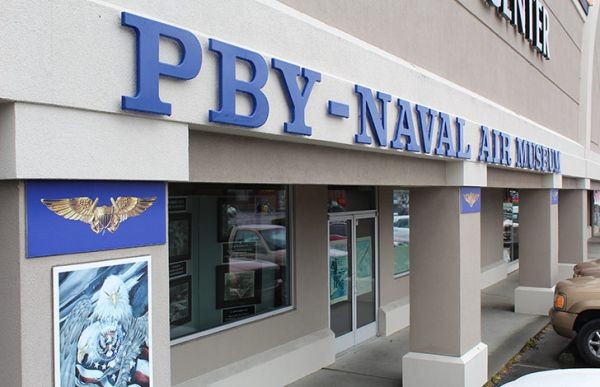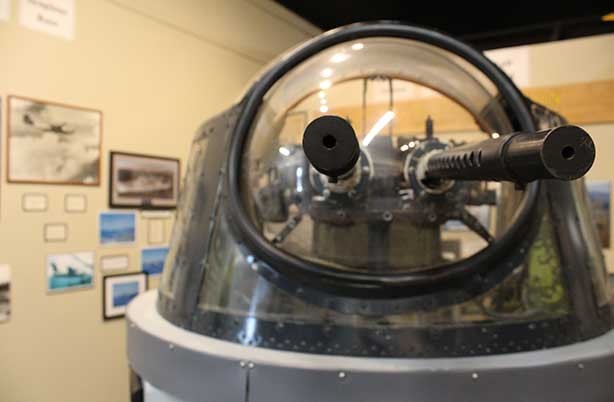PBY-Naval Air Museum and Memorial Foundation
Introduction
Text-to-speech Audio
Images
The PBY-Naval Air Museum and Memorial Foundation was established in 1999 to promote the history of the PBY and the Naval Air Station Whidbey Island.

The museum's restored PBY is on display across the street from the museum building.

Visitors can go inside this gun turret and move it around.

Backstory and Context
Text-to-speech Audio
The museum bought the PBY in 2010. The "PB" stands for "Patrol Boat" and the "Y" is the code for the company that built it, Consolidated Aircraft. In 1933, Consolidated Aircraft built the first PBY prototype and later contracted with the U.S. Navy to build 60. Eventually, Consolidated produced 2,387 PBYs, which was the largest aircraft order in the country at the time.
In January 1941, the Navy began building the Naval Air Station Whidbey Island, which is divided into two locations; one is just to the east of downtown and the other is a couple of miles to the north. PBYs started to fly from the base in December 1942. They were relatively slow and bulky yet versatile; they could land on water and runways, and drop bombs, depth charges and torpedoes. They also had gun turrets to defend themselves against attack. PBYs were also usually the first to spot enemy ships, which is what happened before the Battle of Midway. They typically patrolled coastal areas and could fly for long periods of time.
Sources
"Our History." PBY-Naval Air Museum and Memorial Foundation. Accessed February 17, 2020. https://pbymf.org/history-of-the-pby-memorial-foundation.
"PBY Catalina 5A." PBY-Naval Air Museum and Memorial Foundation. Accessed February 17, 2020. https://pbymf.org/our-pby-aircraft.
Wilkinson, Stephan. "Cat Tales: The story of World War II’s PBY Flying Boat." Navy Times. August 31, 2019. https://www.navytimes.com/news/your-navy/2019/08/31/cat-tales-the-story-of-world-war-iis-pby-flying-boat.
All photos by the PBY-Naval Air Museum and Memorial Foundation
